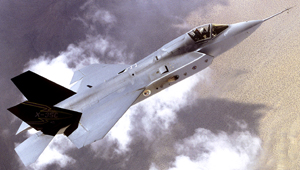INDIAN ARMED FORCES CHIEFS ON OUR RELENTLESS AND FOCUSED PUBLISHING EFFORTS

The insightful articles, inspiring narrations and analytical perspectives presented by the Editorial Team, establish an alluring connect with the reader. My compliments and best wishes to SP Guide Publications.

"Over the past 60 years, the growth of SP Guide Publications has mirrored the rising stature of Indian Navy. Its well-researched and informative magazines on Defence and Aerospace sector have served to shape an educated opinion of our military personnel, policy makers and the public alike. I wish SP's Publication team continued success, fair winds and following seas in all future endeavour!"

Since, its inception in 1964, SP Guide Publications has consistently demonstrated commitment to high-quality journalism in the aerospace and defence sectors, earning a well-deserved reputation as Asia's largest media house in this domain. I wish SP Guide Publications continued success in its pursuit of excellence.
- The layered Air Defence systems that worked superbly, the key element of Operation Sindoor
- Operation Sindoor | Day 2 DGMOs Briefing
- Operation Sindoor: Resolute yet Restrained
- India's Operation Sindoor Sends a Clear Message to Terror and the World – ‘ZERO TOLERANCE’
- Japan and India set forth a defence cooperation consultancy framework, talks on tank and jet engines
Lightning Pace

The F-35 Lightning II—whose development is progressing at a feverish tempo—will bring new capabilities to not only the US Air Force, Navy and Marine Corps but also serve as a centerpiece for some of the leading international air forces.
Concept demonstration and selection in October 2001. First launch in December 2006. The speed with which the Lockheed Martinled Joint Strike Fighter (JSF) programme has been progressing showcases the prowess of modern day cutting-edge technologies. Developing a highly complex weapons platform—a stealth-capable, multi-role strike fighter that can perform close air support, tactical bombing and air-to-air combat—programme managers encountered the whole bewildering range of suspected and unexpected hitches and glitches. What astonished observers was the resolute determination with which the hurdles were overcome and creases ironed out to keep the programme on track.
Tracing the origin of the JSF programme puts the focus on two distinct projects initiated in the early 1990s: the USAF/USN Joint Advanced Strike Technology (JAST) and the Defense Advanced Research Project Agency’s (DARPA) Common Affordable Lightweight Fighter (CALF). A merger in 1994 resulted in the programme being rechristened JSF by end-1995.
The JSF programme was created in the US to replace various aircraft on the inventory of its armed forces while keeping development, production and operating costs down. The original JSF development contract was signed on November 16, 1996 with the announcement by then US Secretary of Defence William Perry that Boeing and Lockheed Martin had been chosen to participate in the weapons system concept demonstration (WSCD) phase. In less than five years, both aviation companies not only produced the technology demonstrators, but also competed with each other. The contract for System Development and Demonstration (SDD), the next step in the development programme, was awarded to Lockheed Martin whose X-35 consistently outperformed the Boeing’s X-32, although both met or exceeded requirements. The fighter’s designation, F-35, came as a surprise to Lockheed Martin; it had been referring to the aircraft in-house as F-24.
On July 7, 2006, the US Air Force officially announced the name of the F-35: Lightning II in honour of Lockheed Martin’s World War II-era P-38 Lightning and the postwar English Electric Lightning supersonic jet fighter. It may be recalled that English Electric’s aircraft division was incorporated into BAC, a predecessor of the current F-35 programme partner BAE Systems.





